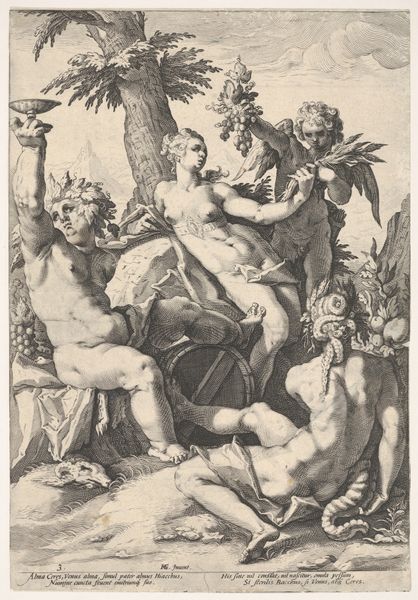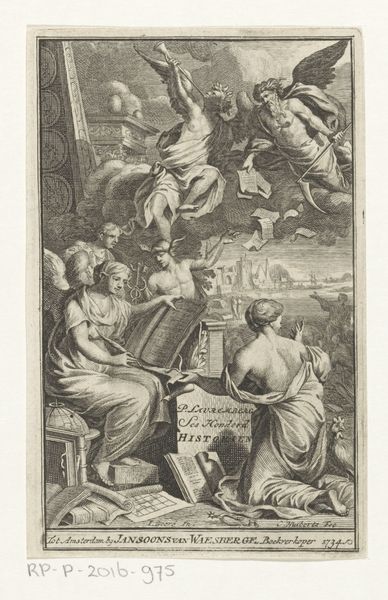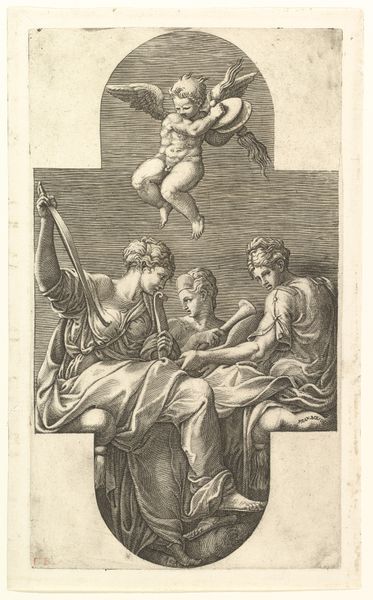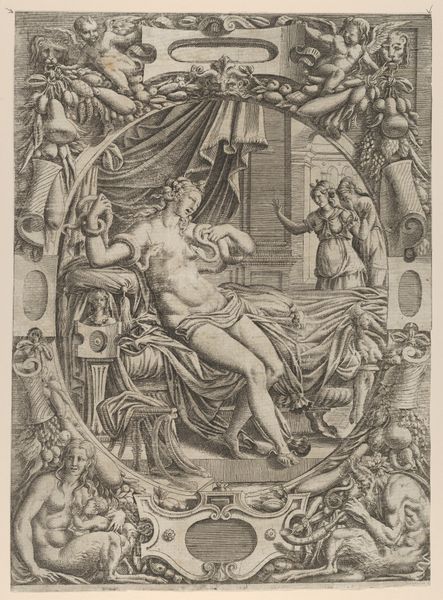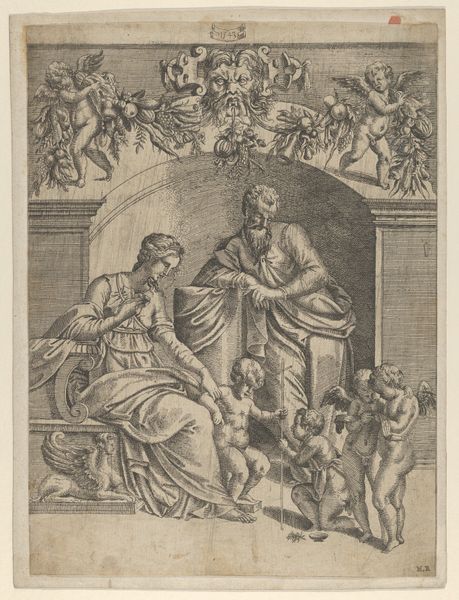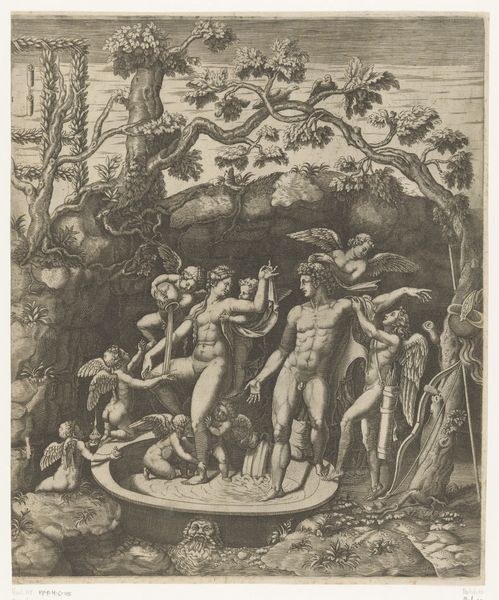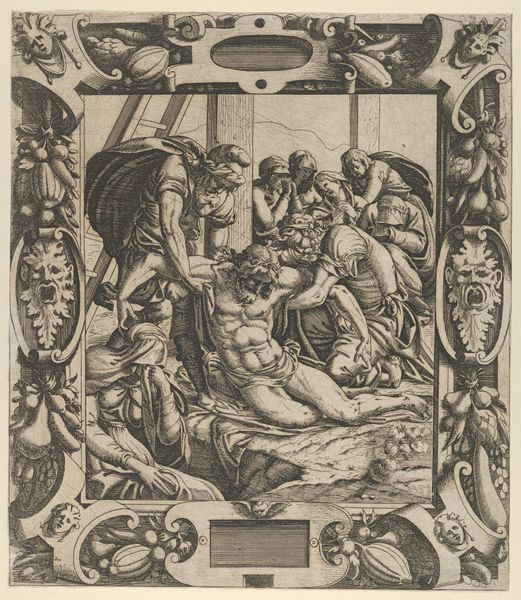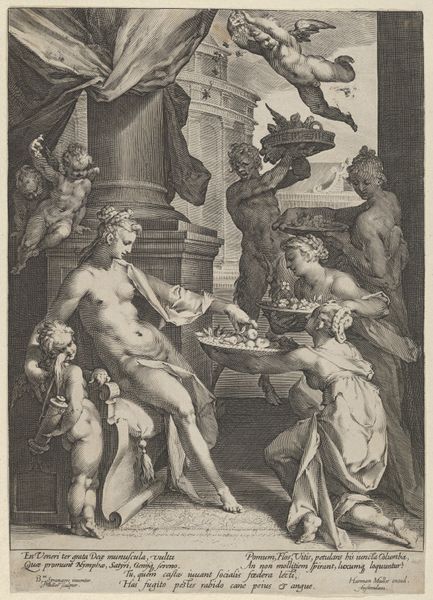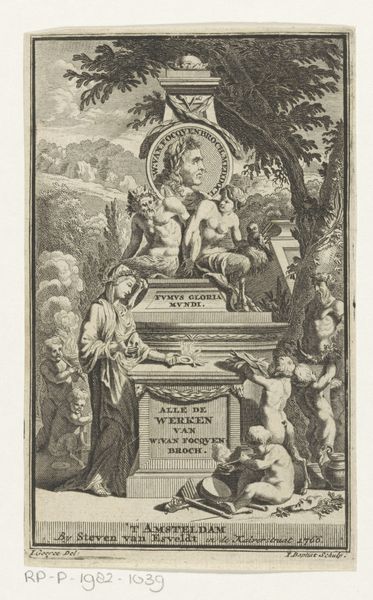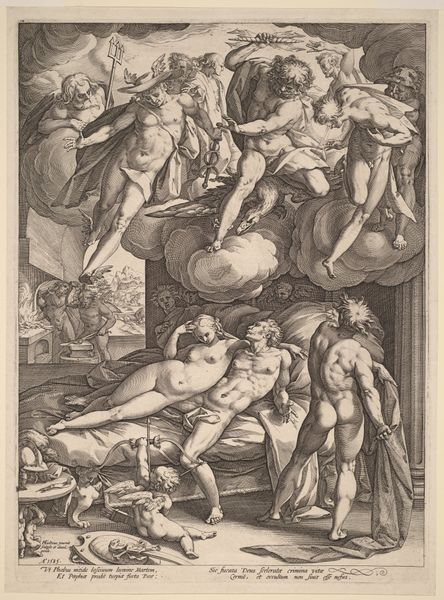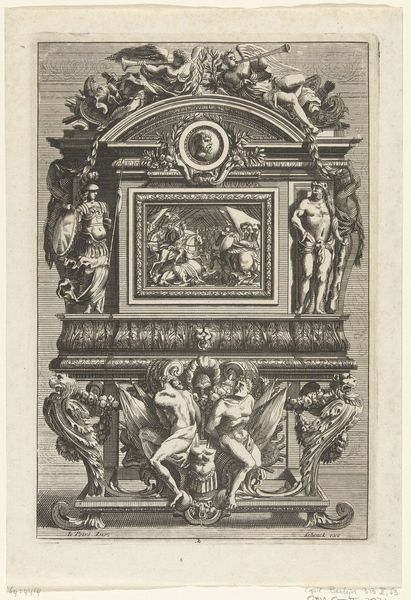
Dimensions: sheet: 17 3/16 x 11 9/16 in. (43.7 x 29.3 cm)
Copyright: Public Domain
Editor: This is "Bacchus, Music, Amor" made between 1575 and 1600 by Johann Sadeler I, currently housed in the Met. It's an engraving filled with symbolic figures. The composition feels quite theatrical, almost like a stage setting. What can you tell me about the context of this work? Curator: It's fascinating to consider how engravings like this circulated ideas in the late 16th century. Notice the inscription dedicates the work to a noble. How might prints such as these have served the socio-political aims of both the artist and the patron? Editor: That's a great question. Maybe the noble wanted to associate himself with classical themes of abundance and pleasure? It feels like strategic self-promotion. Curator: Exactly! And think about the function of allegory here. Why not portray the patron directly? What’s gained by representing power and status through Bacchus and Amor? Consider the broader context: the Holy Roman Empire, patronage networks... Editor: Hmm, making it allegorical maybe elevated it, connecting the patron to timeless, classical virtues rather than just everyday power. Were prints like these widely accessible, or mostly for an elite audience? Curator: Initially, probably more elite, considering literacy rates and collecting habits. But engravings have the potential for wider distribution than unique paintings, and their images could be reinterpreted and reproduced in various media. This democratizing aspect of print is significant. Do you see the text on a tablet there? It contains an epigram by Alciato, does that play into accessibility? Editor: I do! It suggests that understanding requires classical education. It adds a layer, separating those "in the know." This makes the print a display of status in itself! Curator: Precisely. And the Met's display of this print, its preservation, continues this act of institutional validation and gives meaning in the present day. It influences its continued reading. Editor: I hadn't thought about that – how the museum itself frames our interpretation. I’m learning how the meaning of the work doesn’t just come from the artwork itself. Thank you! Curator: Indeed. It’s about how art exists within systems of power and representation throughout history. A perspective I am glad to have shed light on.
Comments
No comments
Be the first to comment and join the conversation on the ultimate creative platform.

